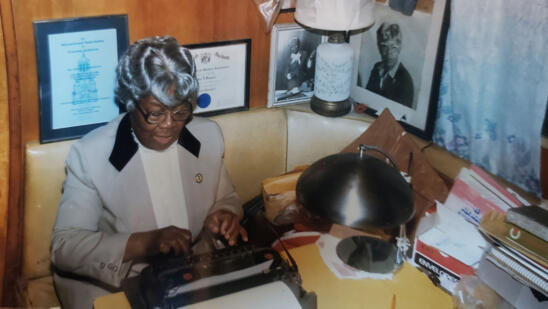By the beginning of 2009, Indiana-based investment advisor Marcus Schrenker was sick of his life. He had lost several costly lawsuits and had several more also heading south. His wife—having caught him in an affair—was filing for divorce.
So Schrenker, age 38, decided to end it all, but not in the way one would normally think. He loaded his Yamaha motorcycle with saddlebags full of cash, transported it to a storage facility in Alabama and then went back home to Indiana, where he took his single-prop plane out for a long solo flight. From above Alabama, he called air traffic control to falsely report that his plane was malfunctioning. He then parachuted out, allowing the craft to travel 200 more miles unattended before it exploded in a fiery crash on the Florida Panhandle, making it look like he perished in a tragic accident.
Schrenker was ultimately apprehended, his attempt at a fake death thwarted when he emailed a neighbor one day after the stunt.
Schrenker is hardly alone in trying to play dead (sometimes referred to as “pseudocide”). Steven Rambam, a private investigator, says he’s investigated approximately 800 death fraud cases in a 40-year career. Describing a faked death as “a missing person’s case on steroids,” Rambam tells A&E True Crime there are lots of surprising trends in this subculture of fraud.
“A lot of people believe that the people who fake their deaths are dummies. And that’s just not true,” Rambam says. “Faking your death is a full-time job.”
The Kind of Person Who Fakes Their Own Death
Not everyone who fakes their death is like Schrenker, with their backs against the proverbial wall, Rambam says. But like him, most have financial motives.
“Money, money, money. Absolutely outrageous greed” is the main driver of pseudocide, Rambam says, noting that cases where someone is attempting to avoid danger, such as a woman running from an abusive relationship, remain the outliers.
Instead, Rambam says many cases in the United States involve perpetrators who were born and raised overseas but developed enough legitimate wealth in America to take out a sizeable life insurance policy. After securing a good policy, the fraudster attempts to fake his or her death while relocating to the other side of the earth.
Many cases, like Schrenker’s, involve a high degree of theatrics.
“I nabbed a woman in Mongolia; they held a funeral [for her] with 200 people and buried a coffin full of rocks,” Rambam says.
Chelsea Binns, an assistant professor in the Department of Security, Fire and Emergency Management at the John Jay College of Criminal Justice, says the people who try to fake their own death “skew towards the more affluent.”
“It’s really not cheap to pull this off,” Binns says. “But the more wealthy the person is, the more suspicious investigators will be.”
Why Fraudsters Believe That Faking a Death Won’t Be Hard
Any death fraud investigation, Rambam says, starts with the question of the dead body: Is there a corpse that’s ostensibly the claimed dead, or does no such body exist? Securing a dead body to stand in for one’s own seems like an impossible burden to law-abiding citizens. But corrupt bureaucracies overseas provide ample opportunity.
“It’s ridiculously easy to get a dead body in a lot of places,” Rambam says, adding that in many countries [outside the U.S.], funeral parlors are tasked with gathering dead indigents off the streets. But without a grieving family member, there’s no one around to pay the bill, leaving funeral homes on the hook and creating the perfect opportunity for a fraudster.
“You wander around the funeral parlor, you say you’re looking for Uncle Hector,” explains Rambam. “You find a body that’s approximately the same height and age, and you say ‘Uncle Hector!’ and the funeral home is absolutely delighted.” From there, it’s just a matter of the fraudster holding a funeral as quickly as possible and then cremating the body.
Why Fraudsters Are Wrong and Almost Always Get Caught
Ultimately though, faking one’s own death is a massively difficult undertaking, both logistically and psychologically. And it’s gotten exponentially harder in the digital age.
“Twenty years ago, this was a lot easier to pull off,” says Binns. That’s partly because the paper documentation has gotten more sophisticated…but also largely because of the ever pervasiveness of the “grid” which people rely upon to lead normal 21st-century lives.
Rambam notes that, “Every day, it gets harder and harder. Every day, there are more data points to finding someone. Ten years ago, facial recognition was just beginning. Now it’s an integral part of just about every investigation I do. Fifteen years ago… [most] hackers didn’t know about cell phone tracking yet. Now it’s routine. It’s mundane.”
But the difficulty isn’t just technological. It’s the complete disruption to life as it was previously known.
“[Faking your death] completely cuts you off from the world forever,” says Binns. “It’s like a witness protection program.”
“You cannot make one mistake,” says Rambam. “You have an elderly mother in ill health? She’s going to die without you at her bedside. A wonderful young daughter graduating junior high? A son playing his first football game? You’re going to miss all of that. You cannot see people you care about ever again. You have to abandon your dog, because a lot of times, the dog will have a chip, and that’s trackable… I have to tell you: There are people who can’t give up their dog or their cat, but they can give up their wife and kids.”
Related Features:
Learn More About ‘Death Saved My Life’
Lisa McVey Talks About Outsmarting a Serial Killer When She Was 17


